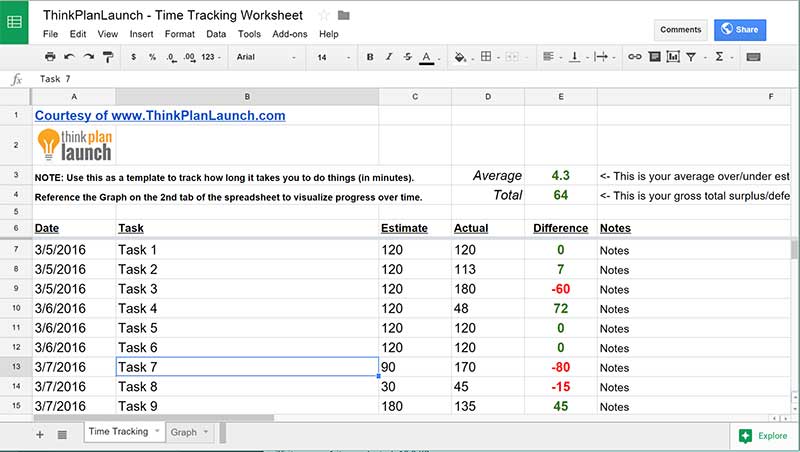Table of Contents
Time Management Skills.
Time Management – most of us have a love-hate relationship with these two words, and for good reason: time management is important yet difficult. When we properly manage our time and things go as planned, we can feel as though we are on top of the world. On the other hand, when we don’t it can feel as though life is a constant struggle in which we are always behind. Developing time management skills should be a priority for everyone.
Below is a simple, high-powered process to leverage your time to its maximum called Launch Control. If you practice this method perfectly, you will absolutely have more “on top of the world” feelings than anything else. After we review Launch Control in its entirety, we’ll explore more into the reason for working “backwards in time” and why this is so effective when planning and developing our time management skills.
Launch Control:
- Identify available time 1 week out from today.
- Estimate time required to complete all pending personal/professional tasks.
- Prioritize and schedule tasks in order of importance (be sure to leave a buffer).
Now let’s look at each of these steps in more detail.
Step 1: Identify available time 1 week out.
As the first step, this is the most important. The goal here is to look at your ENTIRE schedule for the next week, and calendar in everything that is “fixed,” that you can’t (or shouldn’t) get out of — things like work, sleep, walking the dog, doing chores, seeing that friend of yours that’s in town, and so on. Be sure to include laundry, grocery shopping, and eating meals on this list! It might seem like overkill but for effective time management skills to work it will be necessary to be as detailed as possible.
Once you finish, go back through the whole week again and look for any oversights. What’s amazing is how sophisticated we humans are in general, yet how ill-suited we are for planning our time in the absence of a system. Furthermore, I can absolutely guarantee until you go through this process in its entirety, you will remain totally unaware of just how little time you actually have.
Rather, you will almost certainly assume that you have more free time than you do – and in doing so, set yourself up for frustration and failure when you don’t “get everything done” that you would have liked to have done by the end of the week. Therefore, creating awareness is the primary goal of this first step of developing time management skills.
The secondary goal of this step is to quantify exactly how many free hours you have available in the next week to work on specific tasks — in other words, all of your remaining tasks that don’t fall into the “fixed” category. If you have properly identified all of the times you’re busy, things you can’t get out of, etc. – then it will be a simple process of elimination to determine how many hours you have free.
Step 2: Estimate time required to complete pending tasks.
At this point, you have already identified your fixed commitments + available free time for the coming week. Now it’s time to make a LIST of everything you’d like to get accomplished during that free time and estimate how long it’s going to take. This second step may seem easy at first, but trust me when I say it’s not. Just like in Step 1, we humans are prone to extreme inaccuracy when forecasting time-related events and activities. To be specific, well, you need to be specific! This is the best way to develop time management skills.
For each and every individual task written down, you should assign an amount measured in HOURS for how long it will take. It’s perfectly okay to round to the nearest 15-minute block of time, or even the nearest half-hour in terms of your estimates of how long things will take. Just be sure that you are taking the time to think everything through in advance, realizing that you are most likely going to underestimate how long a given task might take.
Keeping this in mind, give yourself a healthy buffer when doing your estimates for the first few weeks – and be sure to track your progress over time. You will surely find areas where you have both under- and overestimated your time estimates, and having the data on hand will help you get better for next time. To help you with this, here at ThinkPlanLaunch.com we’ve put together a free spreadsheet tool using Google Docs that allows you to estimate how long tasks will take, track how long they actually do take, and then visually evaluate your progress with time. If you actually take the time to use this and measure/analyze the time it’s taking you to do things, you’ll develop much stronger time management skills by increasing your ability to anticipate the duration of future tasks.
Now we know it may seem counter-productive to spend an hour at the beginning of each week planning your week, or to spend extra time tracking how long things actually take. However, the REALITY is that the small bit of time lost is made up for 10x over throughout the week when you swiftly execute your plan.
Step 3: Prioritize, schedule, and execute.
At this point, you should have two things in front of you:
1) A complete schedule for the coming week showing times busy/free.
2) A complete list of pending tasks you need to take care of, including estimates of how long each will take.
The third step is to PRIORITIZE this list of tasks by order of importance, then SCHEDULE them into your calendar one by one. In fact, if you’re like us and don’t like committing to a strictly regimented schedule, don’t bother scheduling in the specific tasks to your weekly calendar. Instead, just schedule untitled blocks of “work” time and pick the tasks off of your list like a menu as you go through the week…which brings us to, EXECUTE.
Execution is made incredibly easy if you’ve followed the first 2.5 steps so far. However, no amount of planning and preparation can get you anywhere without a little self-discipline. That’s why it is SO important to ensure your goals are aligned with your passions, and to work backwards in time from your ideal endgame. If you do, you’ll have the wherewithal to push through the hard times and conquer. If you don’t, you will find yourself asking why you’re trying so hard to accomplish something you know deep down isn’t meaningful to you. Learning time management skills is only useful this way.
The final step, of course, is to rinse and repeat Steps 1-3 for the next week. If you do, you’ll find yourself making immense progress towards your goals – both business and personal – in no time.
The Importance of Working “Backwards in Time” when Planning Anything
Now that we have reviewed the 3-step method that is Launch Control, let’s talk more about the importance of working backwards in time when managing your time and making plans for the future. Let’s start with a brief definition of what this means, as you might be wondering just what the heck I’m talking about here.
Working backwards in time is the process of setting a clear goal out in the future, then determining all of the necessary steps that must happen to achieve that goal – from that point in time backwards. This is a clear shift from the approach most of us would normally take, which would be to evaluate where we’re at today and then think of our options moving forward. Part of the learning process for time management skills is having this future-minded planning.
1. Set a Long-Term Goal
The first benefit of “working backwards in time” is that is necessarily requires us to set a long-term goal, which in and of itself is a major accomplishment. So many of us forget (myself included, sometimes!) to do this when planning our day-to-day activities, and when striving to make the most of the few hours we have to ourselves every day. Why? Well, it’s easy to get caught up in the moment on a daily basis, whether that means putting out fires at work, getting distracted on Facebook, or allowing peer pressure and related social factors to steer us in a million different directions all at once.
Setting a long-term goal is crucial when making daily plans, however.
If your actions TODAY aren’t aligned with your long-term goals, then why in the heck are you doing whatever it is you’re doing today?
If you really think about this, it’s pretty sobering. Nearly all of us waste much more time than we’d like to admit on things – every, single, day – that are NOT in alignment with any of our long-term goals. Watching television and dicking off on Facebook are probably the two most common offenders, but I can think of plenty more that affect the Average Joe. Whatever the case may be for you, it really pays to get a handle on your time-wasters immediately. This is critical in developing your time management skills.
Until you generate an awareness of what they are, and how much time they are really robbing from you, it may be difficult to see or even understand how your time is slipping away. Most of us intuitively know and can admit easily enough what these things are. But if you’re not entirely sure, consider keeping a time-log for one week so you can review and analyze it after the fact. This doesn’t need to be a huge chore where you update it every single hour, either. Simply set a few reminders on your phone to go off every 3-4 hours, then briefly jot down what you did during that time. This will take you a grand total of about 5-10 minutes per day, and will amount to a plethora of research (on yourself) that you have never had before. The insights you will gain will be surprising, to say the least, and allow you to start reconsidering how you spend your time.
Now speaking of long-term goals, do you even have one? Is it clear? Another key benefit of goal setting, apart from allowing you to question your daily activities, is the principle of having something to work towards at all. Too many people haven’t set long-term goals for themselves, and they are just floating from one moment to the next, unsure where life is taking them. However, many of these same people do have vague aspirations of being “successful” or accomplishing certain things in their life. They just haven’t taken the time to really clarify exactly what they’d like to do, when they’d like it to happen, and how they plan to get there. Which brings us to…
2. Master Time Management Skills by Narrowing Your Options
The second benefit to working backwards in time comes by nature of how it limits your options when deciding what to do next; that is, what you should do with your time in the immediate future. Without a long-term goal set, it’s hard to know where we’re going or how we’ll get there. But WITH a goal, suddenly our options become few and far between – and the path forward much clearer.
Take, for example, the idea of “starting a website” as a basic goal. If you want to “start a website” and are thinking of it in terms of today forward, you might easily be overwhelmed by the amount of options out there – not to mention what the appropriate next step should be. Should you first pick a name for your website? Setup the domain and hosting? Develop some content for the pages or blog? These questions can go on forever, and you could easily succumb to complete decision-making paralysis (if not information paralysis due to the endless resources at your disposal with some simple Google searches).
But instead, let’s say your website goal is more specific: you want to start a cooking blog, which features all of your favorite recipes and serves as a platform for you to successfully launch a book one day. By the time you launch your book, say 3-4 years out from today, you imagine that you’ll have a few hundred personal recipes posted along with some other blog articles, and have a traffic base of at least a few hundred unique visitors per day. Now…ask yourself, what needs to happen immediately before that to get there?
Before you have a few hundred posts, you need a few hundred personal recipes – do you have them, and if so are they written down? If not, how long will it take you to experiment with recipes and test-cook all these meals to come up with them?
Similarly, before you have a few hundred targeted site visitors per day, you’ll need to invest time (and probably money) into marketing your site – which now also means you must learn about online marketing, or hire someone who does. How much time will it take to learn, or how much will it cost to outsource this? Part of developing great time management skills is understanding when to do something yourself vs. when to get help or outsource.
And once you decide one way or the other (to outsource or not to outsource), how much money will need to be spent on advertising to get to the point you need to be at? Do you even know? If not, this might be a big “aha” moment when you realize the need to spend several hours researching online marketing, or speaking with online marketing professionals who can give you some realistic ideas of what to expect.
Without getting into all the nitty-gritty detail in this article, you can see how this work-backwards method of questioning makes it easier to do some down-and-dirty math to figure out how much time you’ll need to spend TODAY (and each week, each month, and so on) developing this project, including designing the website, posting the recipes, building an audience, and writing your book.
The key is once you define project milestones and a general calculation of how many hours you’ll need to invest completing each task to the level desired, you can view your current life priorities and schedule in the context of achieving mission success for this goal – and obtain a realistic estimate of when a given project can be completed.
Conclusion
Developing time management skills involves much more than a couple of simple tips or tricks. Proper time management is about setting goals, looking at the big picture, and intelligently analyzing the implicit requirements of your goal(s) in a step-wise manner to obtain the insights needed to understand the time investment therein. Then a mature approach to evaluating your current life priorities and understanding time-wasters is needed to ensure you put yourself into motion with the correct trajectory. You’ll also need a healthy dose of motivation and self-discipline, which we’ll save for another article.
The really GOOD news, however, is that once you identify your time-wasters, commit to achieving long-term goals, and start planning backwards in time to figure out what must happen next, daily time management ceases to be a chore and instead becomes quite a bit of fun. Trust me when I say you will feel empowered to achieve your maximum potential and confident when going through this process, since you will feel propelled with incredible acceleration towards your purpose.





Leave A Comment